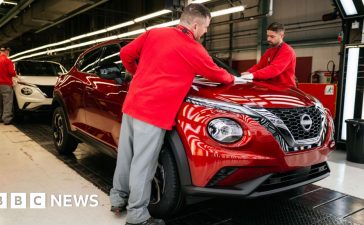This July the body of 16-year-old Duvan Tomas Perez “became entangled” in meat processing machinery, according to a statement from Mar-Jac Poultry, the company where the boy was working. Perez was too young to be working there, according to Mar-Jac, which blamed an outside staffing company for failing to verify Perez’s age and identity. Perez was not the first worker to die at the plant in recent years, and he was not the first 16-year-old to die at work in the US this summer.
American legislators should be working to crack down on child labor, here and abroad, but instead, politicians – including Democrats – in at least 11 states have introduced or passed bills that weaken child labor laws. At a time when adult workers are demanding a fairer slice of the increasingly behemoth pie of corporate profits, child labor is a capitalist work-around to increase the labor pool and lower the wages of all those who have to work for a living.
I’m embarrassed to be writing an anti-child labor article in the year 2023, as if this is some Charles Dickens novel leaking gruel and cruel men. It is not as if child labor had ever disappeared, of course; children around the world toil in fast-fashion sweatshops and among the mountains of garbage in other countries but produced by Silicon Valley. This is unfortunately where capitalism is heading, and has always been heading: children competing with their parents for jobs amid the ruins of societies we sacrificed for profit. But for awhile it seemed like child labor might have escaped the empire to live primarily in its colonial subjects.
Child labor was once as rampant in the US as it is in the countries of the developing world. In 1900 one out of five American children – including children as young as 10 – were employed. A quarter of textile workers in the American south were under the age of 16. In the north, factories relied on child labor so heavily that some areas suffered from “boy shortages” that led to corporate agents traveling the country in search of orphaned children to put to work.
It is difficult to calculate the total number of legal and illegal child workers in the US today. In the agricultural industry alone, there are likely hundreds of thousands of children, largely from Central America. A New York Times investigation earlier this year found that many US brands directly or indirectly use child labor, including Lucky Charms, Nature’s Valley, Ford and J Crew.
While some of that work is legal, the federal government, at least, has been cracking down on illegal child labor. The number of minors in child labor violations has increased by 283% since 2015, according to the Economic Policy Institute. According to the US Department of Labor, over 800 companies illegally employed children in the last fiscal year, and one meatpacking company was fined for employing children across 13 different plants.
Legal child labor may seem like an odd turn of phrase but child labor isn’t at all banned in the US. The 1938 Fair Labor Standards Act created a federal minimum wage and banned children under 16 from “hazardous” work, but left agricultural workers out of many of its reforms. This is why so many children are “legally” employed, and why many agricultural workers in the US do not have a right to a minimum wage.
These policies allowed the US to maintain its long history of relying on slavery and near slavery for its agricultural wealth and give companies the ability to replace adult workers with children when adult workers demand decent pay – an increasingly common occurrence since Covid-19 reminded workers of how important they are, and how little they are valued.
The pandemic killed over a million Americans, many of them workers or potential workers, and brought on a wave of retirements that left an even larger hole in the labor market. Holes like this can increase the value of individual workers and allow them to negotiate for higher wages, a trend that followed the bubonic plague in Europe. The meat-processing company where Duvan was working alluded to the underlying conditions that landed the company with child workers: “Due to an unprecedentedly tight labor market, Mar-Jac MS relies on staffing companies to fill positions at its facility,” a statement the company issued in July said.
While some companies are turning towards automation, others are turning towards taking our teens from schools and into factories. Instead of cutting CEOs’ record salaries, corporate leaders – and their political allies – are fighting to maintain low wages by any means necessary.
Iowa has moved to allow children as young as 14 to work in industrial laundries and meat coolers, as well as created a special license to allow some 14-year-olds to drive up to 50 miles for work between 5am and 10pm. Nebraska has moved to join other states in allowing employers to pay people under 20 less than minimum wage – as low as $4.25 an hour. These laws are being pushed by groups such as Americans for Prosperity, various chambers of commerce, and restaurant associations aiming to hire younger bartenders.
Some legislators characterize the work that killed Duvan as potential sources of revenue for struggling immigrant families. But this is a macabre policy solution birthed by a sanguinary system. Instead of putting children to work, we ought to ask ourselves if a system that cannot rid itself of child labor is worth keeping.








